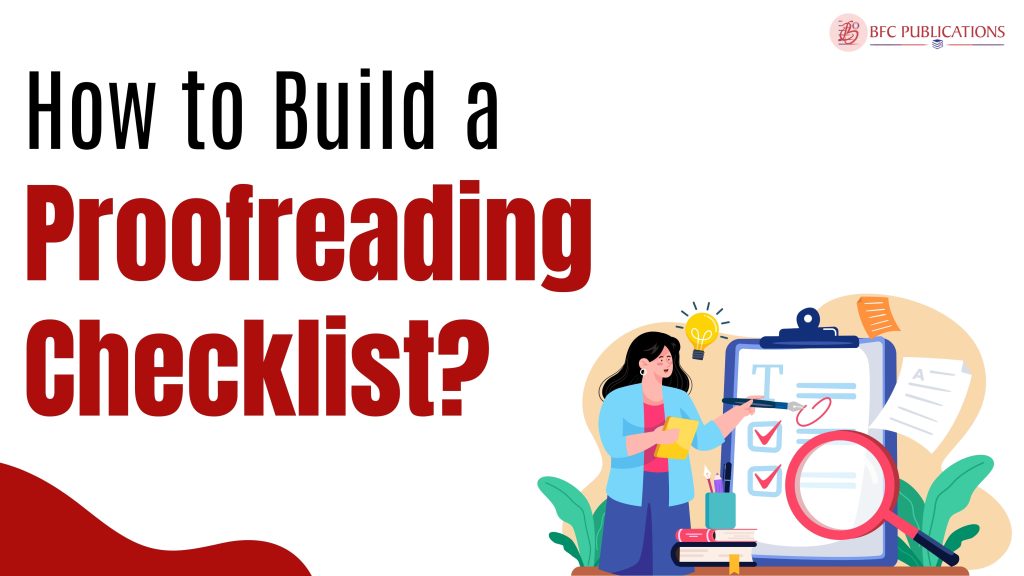
Nobody submits a half-baked project, especially when it comes to publishing. That is why proofreading is extremely important for you as an author.
In writing, proofreading is the final touch-up for any document. Hence, when it comes to publishing, submitting your first draft is a big no-no!
Indeed, it requires a keen set of observation skills to refine every piece of writing. However, proofreading is not hard work but smart work! We all wish for a guide we had known when we first stepped into our professional journey. We are only human, so it’s not easy to remember every tiny detail!
So, here is an approach to proofreading checklists to keep in mind while editing your manuscript.
Tone & Language
Writing isn’t just jumbling random words on a page and expecting everyone to understand it! You may have written everything right, putting in facts and details, but without proper research, that’s not what attracts the audience! You don’t want to sound too formal unless it is a research paper for academics.
Academic essays and technical writing demand formal and appropriate language that is devoid of slang. Formality, seriousness, and logic are the key points in checklists for proofreading scientific documents.
On the other hand, the informal and casual flow of language is the baseline for the larger audience out there who understand street language or whatever is trending in the market!
Therefore, language and tone are two important aspects to focus on in your proofreading checklist!
Writing Style Guide!
While these details are taken into consideration in the writing phase itself, certain points need to be taken care of in the final draft. Formality of the language.Language preferences (American/British) , Referencing guides (Chicago,MLA,Harvard, APA etc.)
Especially if you are writing as a freelancer, clients often have varying requirements. So, review your writing style to match the reader’s demands.
Clarity and Consistency
Have you ever searched for something and found a blog too long, leaving you unsure of where it’s headed? You find yourself wondering questions like:
How is this relatable to my concern? What is the point of the whole blog?
Frustrating, right? Well, that’s what we don’t want to happen in our proofreading checklists!
To grab a reader’s attention, your writing should be fresh, but it must also have clarity and consistency. An audience values consistency in the knowledge they are getting more than just factual data. Readers should find what they are looking for, so don’t stray off-topic.
Also, using bullet points, well-structured paragraphs, and clear headings are essential for an engaging writing piece.
Avoid jargon when it’s unnecessary, and keep things simple! Be clear about what you are conveying, using minimal words and maintaining a consistent flow throughout the text. And remember to stick to the point—context matters!
Do Not Forget the Visual Appeal!
Perhaps one of the most underestimated tips in a professional proofreading checklist is visual appearance. Depending on the niche, context, and genre of writing, visual appeal can add an extra touch to your writing style.
Use relevant images to grab a reader’s attention. If you are publishing on a website, working on the visual style is a good idea. Moreover, people notice pictures more quickly than text. So, enhancing the visual appeal is another important point on the proofreading checklist!
Amp up Your Grammar Game!
A small writing error can change the whole meaning of a sentence.
Imagine reading “The Fault in Our Stats” instead of “The Fault in Our Stars”!
It is common to make grammatical errors while writing. Even as an expert, one is bound to miss tiny details when lost in creative tasks. Checking for spelling and punctuation errors is a top priority in any proofreading checklist. So, before you choose to publish, make sure to run a spell check on your document. Thanks to software and editing tools, proofreading has become a lot easier for writers, allowing us to catch those tiny yet noticeable errors.
Keeping up with the Dialect!
If you are using jargon in your writing, make sure it is specific to the target audience. The language used in blogs and articles across websites often targets a particular niche. Using language and phrases that people don’t relate to is the last thing you want. Hence, always research and stick to country-specific jargon to engage your audience effectively.
Track Changes!
Tracking changes in the document is one of the final steps in editing. Enabling this option from The review tab will save you from a lot of confusion.
You can easily compare your original draft with the final copy to review the changes. As a working professional, you should always let your client know what is benig edited and corrected. If possible, provide suggestions and ask for feedback from the client.
Create Your Proofreading Checklist Template!
Use a proofreading checklist template to organize your editing goals. Identify the types of errors you want to focus on, such as spelling mistakes, grammatical errors, etc. Create a table and categorize the errors in sections. While proofreading, keep marking the checklist box to track progress in the document. Keep separate checklists for proofreading scientific documents.
So, to sum up, the blog, proofreading is the final most important stage of a document matter what you write or submit a manuscript, blog, a research paper, proofreading is crucial for quality check!
Make a personal proofreading checklist pdf for personal goals and preferences. It will come in handy to you for a long term in your professional journey!
Please let us know your thoughts on this post by leaving a reply in the comments section. Also, check out our recent post on “How to Avoid Publishing Scams?”







